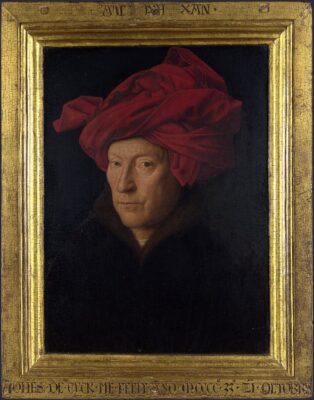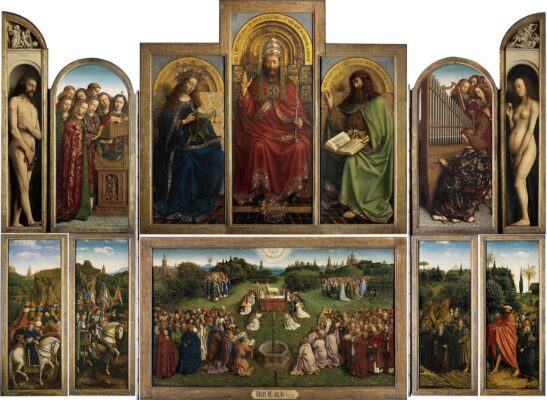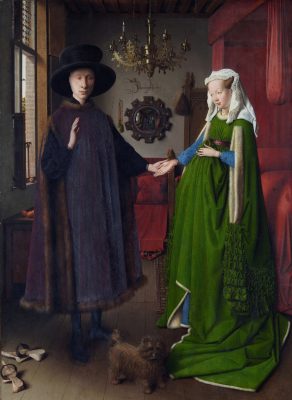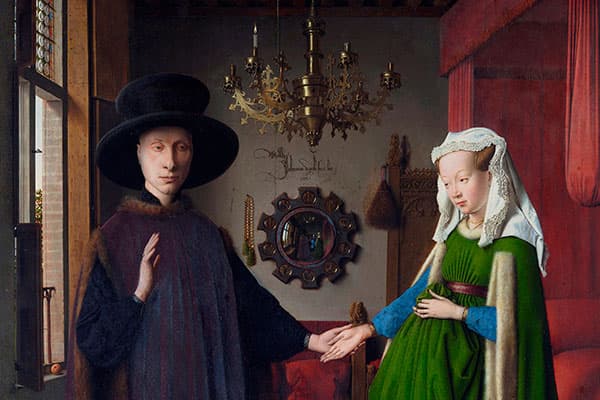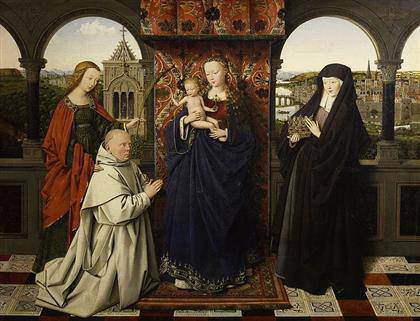Jan van Eyck
“[Van Eyck] showed people with all their strengths and weaknesses: dignified, but with their big noses and bad skin, their wrinkles and sleepy eyes”
Thomas Köster
The foremost of all the Early Netherlandish painters, Jan van Eyck took pictorial realism to heights never seen before. Van Eyck transferred the precision and meticulousness of the illuminated manuscripts to oil painting, both large-scale painting (“Ghent Polyptych“) and small portraits (“Portrait of a Man in a Turban“). With his technical perfection and his remarkable use of perspective, Van Eyck was undoubtedly the greatest painter of his time.
Imagen: Jan van Eyck: Portrait of a Man (Self Portrait?). 1433. Oil on panel, 19 x 15.5 cm
Little is known of Jan van Eyck’s early life, although it seems clear that he was not the first painter in his family. In fact, we know that his brother Hubert van Eyck was an esteemed artist, and on the aforementioned Ghent Polyptych (known as “Adoration of the Mystic Lamb” or “Polyptych of the Mystic Lamb”) there is an inscription stating that “The painter Hubert van Eyck, greater than whom none was to be found, began this work and Jan, his brother -second in art…“. Whoever was the true author of this work, one of the summits not only of Flemish painting, but of universal art, the intervention of Jan van Eyck in it is beyond doubt.
Even before his intervention in the aforementioned polyptych, Jan van Eyck began painting in the field of miniatures, and it is believed that some of the most beautiful illustrations of the “Turin Book of Hours” (those usually identified as “Hand G” or “Master G”) were made by him. In any case, “whether it was [Van Eyck’s] or whether it was made years later by a miniaturist familiar with his painting, [we are] faced with one of those works in which the limits of Flemish art in the recreation of a luminous illusionist space based on a practice not supported by a rigid system of representation are revealed” (Joaquín Yarza, “Jan van Eyck”, 1993). The precision demanded by miniature painting is notable in later works by Van Eyck, such as the “Léal Souvenir” in the National Gallery in London or the “Madonna of Chancellor Rolin” in the Louvre. However, his most outstanding work is the portrait of Giovanni Arnolfini and his wife, known as “The Arnolfini Marriage” or “Arnolfini Portrait”, a supreme masterpiece that has provoked multiple debates among scholars and critics. This work was selected by theartwolf.com as one of the 50 masterpieces of universal painting.
Jan (and Hubert?) van Eyck: Ghent Polyptych (known as “Adoration of the Mystic Lamb” or “Polyptych of the Mystic Lamb”), 1432. Oil on panels, 350 cm × 223 cm. St Bavo’s Cathedral, Ghent. Jan van Eyck: “Portrait of Giovanni Arnolfini and his Wife”, known as “Arnolfini Portrait”, 1434. Oil on panel, 82 x 59.5 cm. London, National Gallery.
After this sensational work, Van Eyck painted two important religious scenes, the “Virgin of Chancellor Rolin” (1434), now in the Louvre Museum, in which he included “a realistic landscape that appears as the marvellous discovery of a visible world” (History of Art, Salvat Editores, Vol. V, 1981), and “Virgin and Child with Canon van der Paele“, the largest of all the works attributed exclusively to Jan van Eyck, and preserved today in the Groeningemuseum in Bruges. He died in June 1441, and was buried in the Church of St. Donacian in Bruges.
Few works undoubtedly attributed to Jan van Eyck have survived to the present day. There are, however, several copies of lost works by the artist, the most prominent being “Woman Bathing” (which, for all we know, may have been a work of comparable quality to the Arnolfini Portrait) and the “Madonna of Nicolas van Maelbeke”, which may have been his last work. Many scholars hope that some of these works may be rediscovered in the future, which would be one of the most important events for the study of old masters painting.
G. Fernández · theartwolf.com
Masterworks by Jan van Eyck
More about Jan van Eyck
Follow us on:

